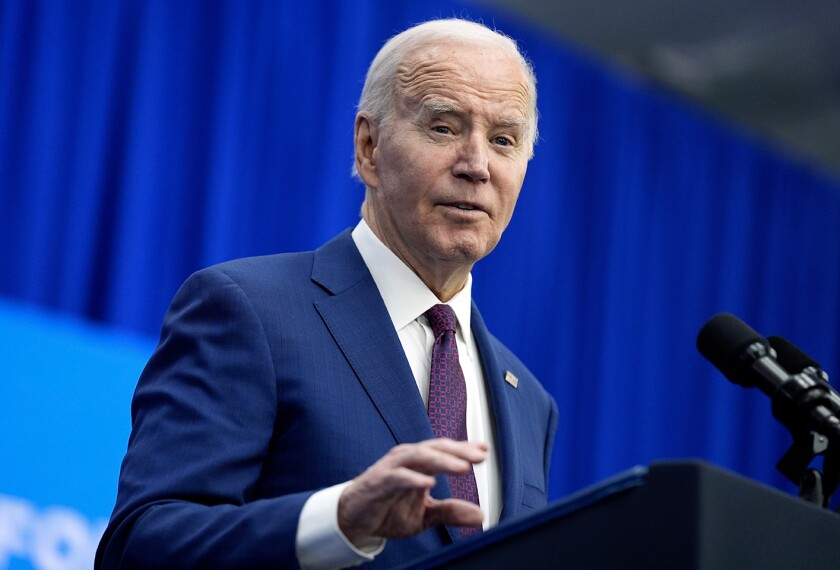The $1.2 trillion funding package that will keep the federal government operating through September includes a cut of about $100 million to the U.S. Department of Education’s budget even as it provides small increases to key K-12 programs and holds the line on others.
President Joe Biden signed the funding package into law over the weekend after it passed the House on March 22, and the Senate early the next day, averting a partial shutdown. The package combines six annual spending bills to pay for different parts of the federal government, which had been operating on stopgap measures in the absence of a final budget for the 2024 fiscal year that began last October.
The Education Department will receive $79.1 billion for the fiscal year that lasts through Sept. 30.
That’s about $100 million less than the department’s final budget for the 2023 fiscal year, a drop of about 0.2 percent. And it’s far short of the $90 billion Biden had requested for the department in his initial 2024 budget proposal, which he unveiled a year ago, in March 2023.
But even with the overall cut, lawmakers provided increases of $20 million each to Title I grants that support services for low-income students and Individual with Disabilities Education Act, or IDEA, funds that help schools cover special education costs. Title I and IDEA are the two largest federal funds for K-12 schools.
The $20 million increases would bring Title I funding to just above the $18.4 billion allocated to the program in 2023 and bring IDEA funding to just above its 2023 level of $14.2 billion.
An Education Department spokesperson said the year-over-year differences are largely the result of mid-year budgets cuts and earmarks—funding lawmakers designated for specific projects.
The federal government typically accounts for less than 10 percent of the money spent each year on public education nationwide.
The Republican-controlled House had initially passed deep cuts to Title I and the elimination of funds that support English learners and teacher preparation, recruitment, and professional development. The spending bills that became law preserve that funding, according to a summary from the Senate’s appropriations committee.
Outside of the Education Department budget, the spending bill increases funding for Head Start by $275 million over last year, bringing total financing for the early-childhood program this year to $12.3 billion.
The additional money is meant to help the program address staffing shortages as it experiences its highest turnover in two decades, according to the appropriations committee summary. The Biden administration proposed a new rule in the fall that seeks to raise Head Start teacher pay in the coming years to bring it closer to K-12 teacher salaries, a change that will require additional funding for Head Start programs, which have been serving fewer children in recent years.
In his initial 2024 budget proposal, Biden had sought a $1.1 billion increase over 2023 for the program that serves children living at or near the federal poverty level.
The newly approved spending package also includes funding in the Defense Department budget to double enrollment in that agency’s prekindergarten programs for children of military members.
The National Association of Secondary School Principals welcomed the new budget.
It “avoids painful cuts while increasing the resources for high-needs students like mine,” Chris Young, the principal of North Country Union High School in Newport, Vt., and the principal association’s advocacy champion, said in a statement.
Biden unveiled his budget proposal for the 2025 fiscal year, which begins Oct. 1, before lawmakers had passed the final 2024 spending package.
In the 2025 budget proposal—which is unlikely to pass a divided Congress as is—he requested $82 billion for the Education Department, representing a smaller increase than he’d proposed in past years to stay within spending caps the president negotiated last year with then-House Speaker Kevin McCarthy to avert a default on the national debt. Those spending caps also apply to the 2024 funding bills.
Biden’s 2025 budget proposal includes increases for Title I and IDEA, as well as an $8 billion academic-acceleration grant program meant to help districts maintain learning-recovery initiatives they’ve launched in recent years with the help of $190 billion in federal COVID-relief funds, the last round of which are set to expire Sept. 30.








